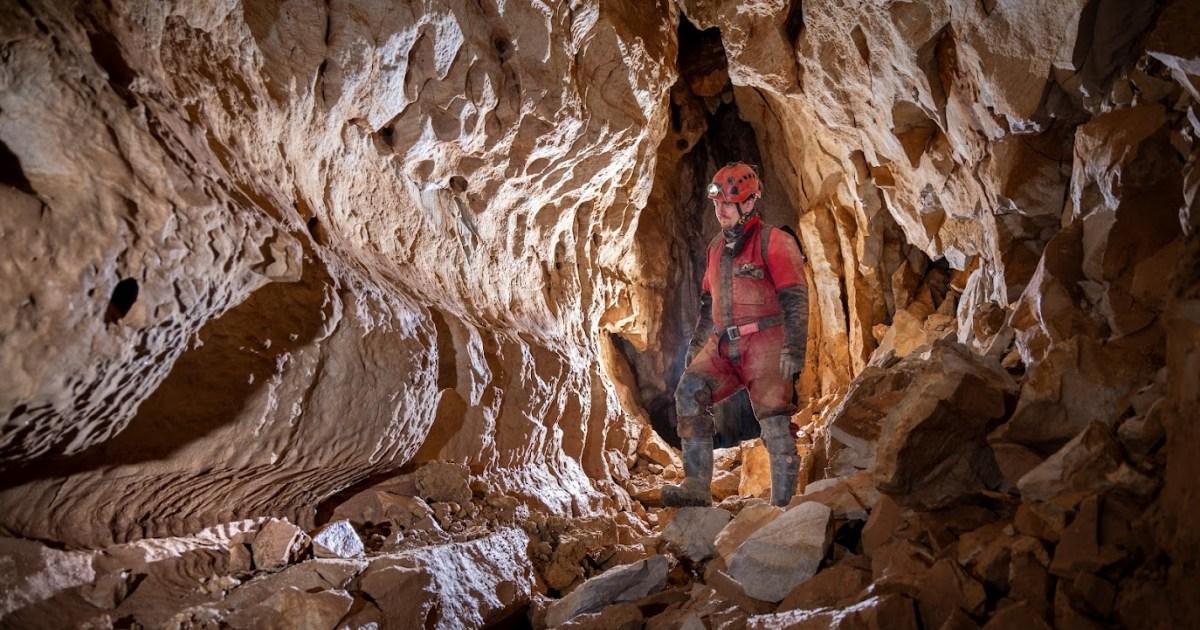Our monthly seminars are intended to promote the scientific importance of caves and karst,
and they describe ways in which BCRA supports cave research. Some of these talks are jointly
organised by BCRA and the Ghar Parau
Foundation. GPF is a charity that provides grants to British caving expeditions throughout
the world. These talks will use the Zoom platform. We took a summer break in July and August and
returned in September for a further series of talks. These will continue to the end of the year,
and we will announce the complete programme as soon as we can.
#1 — Mon 13 Jan 2025 ▼
Microbial Nitrogen Cycling and Cave Passage Modification in Mulu National Park
With: J. Max Koether, Department of Geology, University of Alabama
Time: Mon 13-Jan 2025, 19:30 to 21:00 GMT.
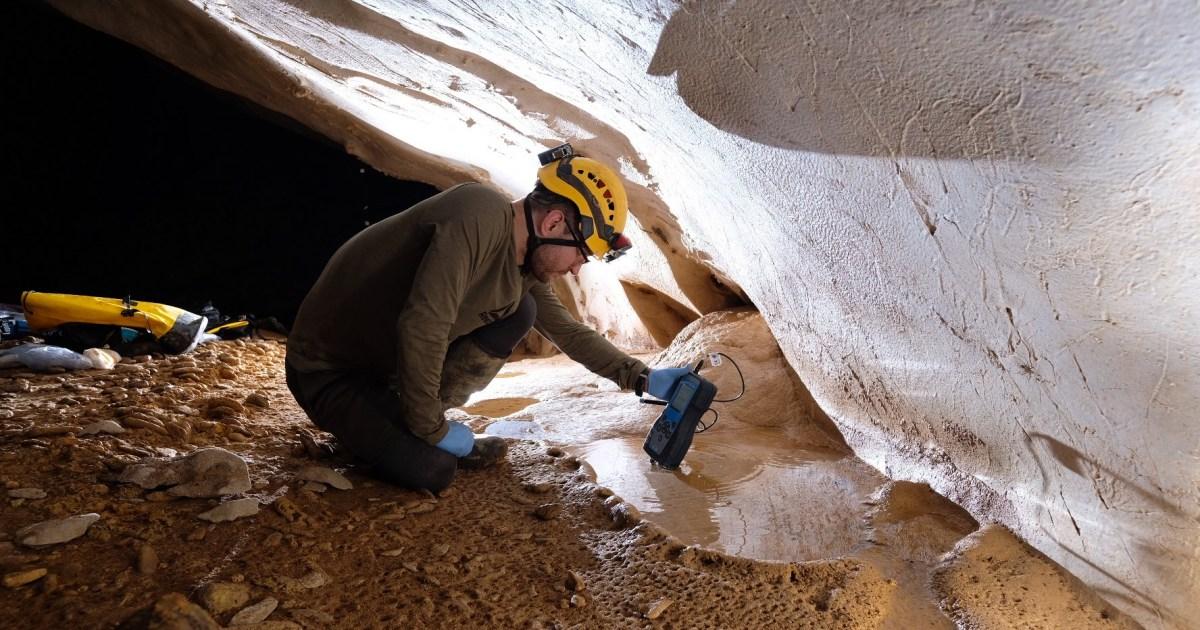
Photo: J. Max Koether
Research into how caves form increasingly reveals the critical role of microbes in promoting chemical erosion through
the production of acidic byproducts. The caves of Gunung Mulu National Park in Sarawak, Malaysia, offer a setting to
explore a novel nitrogen-driven method of cave passage modification and enlargement. These caves include some of the
world's largest and longest cave systems, including Clearwater Cave, which extends over 250 kilometers, and many of
these caves feature unusual formations, such as massive ceiling scallops and corroded speleothems. We suggest that these
distinctive features result from dissolution caused by microbial activity.
Microbial activity within the nitrogen-rich guano from birds and bats in the caves generates ammonia gas. This ammonia
adheres to moisture on cave walls, where microbes recapture the ammonia and metabolize it, producing nitric acid as a
byproduct and leading to the chemical dissolution of the rock. Using several analytical techniques, both in the field
and in the lab, we propose that nitrogen-driven dissolution is a common process in tropical caves, and that this
mechanism may play a significant role in enlarging cave passages after their initial formation.
#2 — Mon 10 Feb 2025 ▲ ▼
Sulfuric Acid Speleogenesis: how can we recognize it and what can it teach us?
With: Jo De Waele, Professor, Dept. of Biological, Geological, and Environmental Sci., University of Bologna
Time: Mon 10-Feb 2025, 19:30 to 21:00 GMT.
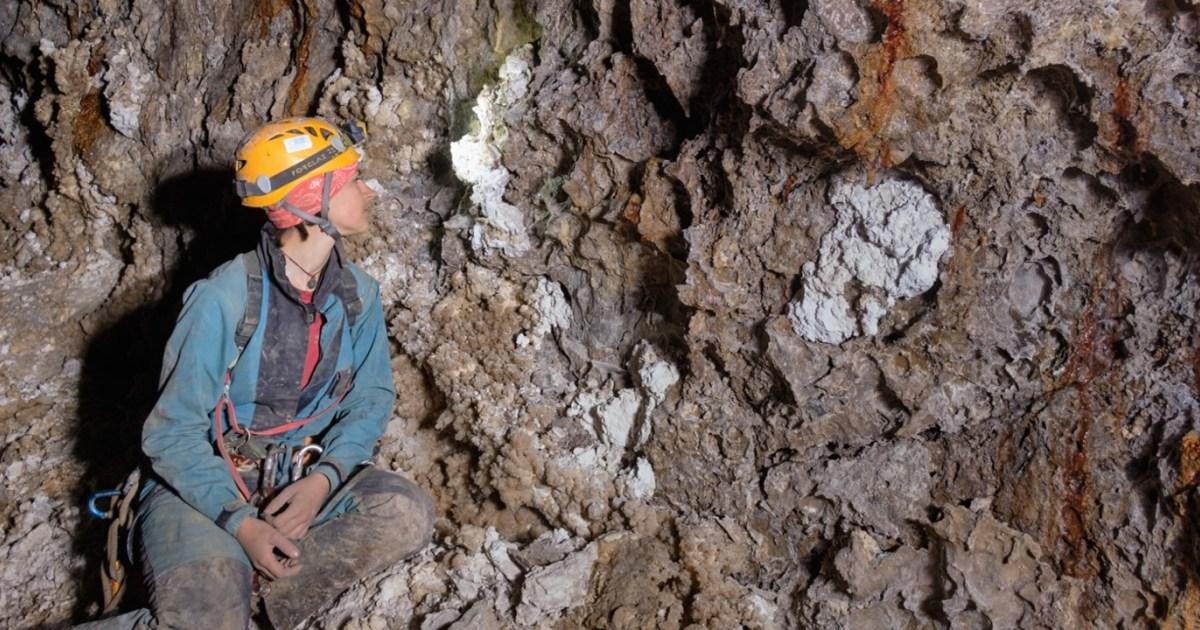
Shpella Avulit, Albania
Photo: Orlando Lacarbonara
Although sulphuric acid caves (SAS Caves) have been known of for over two centuries (Socquet described a SAS cave in
Aix-les-Bains in 1801), these caves were considered as "geological oddities". They rank among the "hypogene" caves, and
are important for the understanding of void formation not directly connected to present-day meteorology and surface
morphology (e.g., hydrocarbon reservoirs, Mississippi valley type Pb-Zn ore deposits). Since the discovery of
Lechuguilla Cave in New Mexico and Movile Cave in Romania (both in 1986) speleological and karstological research has
intensified and many more SAS caves have been discovered and recognized.
Today over 90 SAS cave occurrences have been reported around the world, and their number is increasing steadily as
cavers have started to recognize their typical morphologies and by-products. This talk, prepared in collaboration with
Ilenia Maria D'Angeli, will show the distribution of SAS caves in the world, the different typologies, their unique
morphology and by-products, their role in understanding landscape evolution, and their intriguing microbiology and
biology.
#3 — Mon 10 Mar 2025 ▲ ▼
The Underground Mistakes of My Career. Lessons learned from Maaras Cave, Greece.
With: Christos Pennos, Aristotle University of Thessaloniki, School of Geology, Thessaloniki, Greece.
Time: Mon 10-Mar 2025, 19:30 to 21:00 GMT.

Photo: Christos Pennos
In this talk, I will present data collected from Maaras Cave over the past seven years, focusing primarily on
hydrogeology and geomorphology. The Maaras Cave system is located along the northwestern margin of the Aggitis River
basin. It contains an active fluvial system fed by a closed karstic basin, the Kato Nevrokopi polje, to the northwest.
The cave is formed within the marbles of the Rhodope Massif and exhibits a distinct morphological pattern. It lacks
closed loops and follows a hierarchical structure, where lower-order tributaries merge into higher-order passages. The
system consists of two main tributaries, an eastern and a western branch—that converge into a single conduit flowing
toward the spring a typical branchwork cave following Palmer's classification.
#4 — Mon 14 Apr 2025 ▲ ▼
Palaeontological Perspectives on Caving in Thailand
With: Spyridoula Pappa, Senior Curator of Fossil Mammals, Natural History Museum
Time: Mon 14-Apr 2025, 19:30 to 21:00 BST.
This is the talk postponed from December 2024
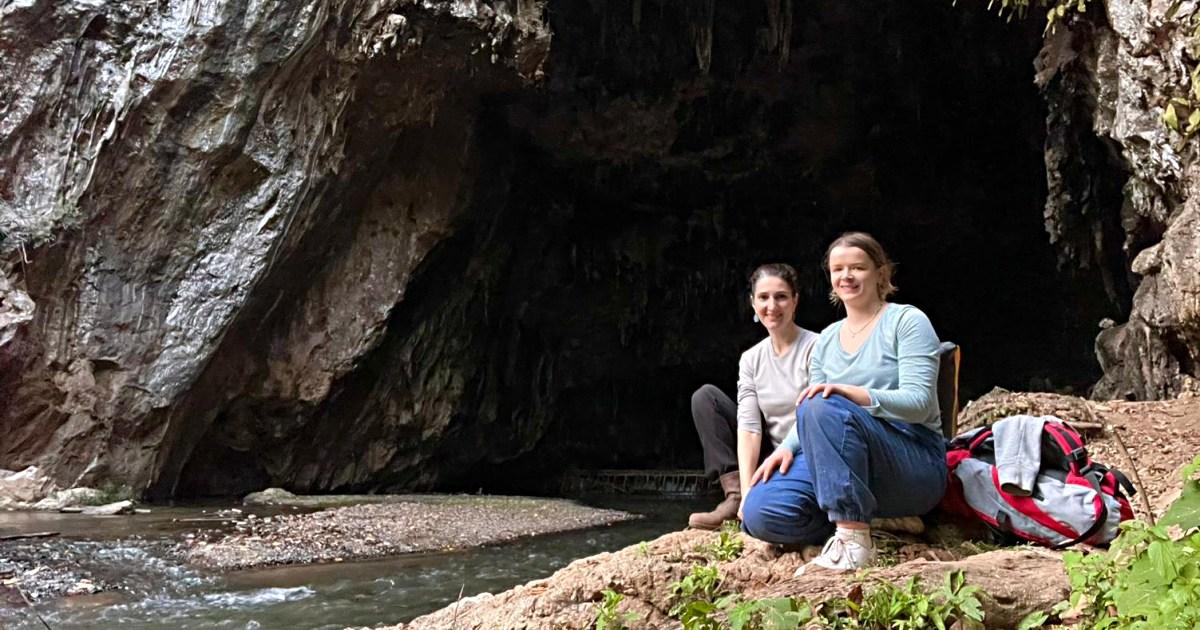
Spyridoula Pappa and Laura Hemmingham outside Tham Lod rockshelter
Photo: Spyridoula Pappa
If you want to know more about caves and fossil mammal remains from Mae Hong Son Province, in north-western Thailand,
then join me for this talk where I am going to share everything from my most recent research fieldwork in Thailand, in
January 2024.
One of the most interesting and important sites that I visited was Tham Lod rock shelter where I sampled teeth fron
Eld's deer. Tham Lod is a magnificent and famous cave and a well-stratified archaeological site, where more than 100,000
archaeological items were unearthed during previous excavations. I and my NERC DTP PhD student Laura Hemmingham have had
the opportunity to collect samples of over 200 fossil deer teeth, excavated from several Thailand caves and open sites.
Through the Eld's deer project we studied the diet of Pleistocene deer in relation to climate using the methods of
dental wear analysis (DWA), mesowear and species distribution models. My research focuses on palaeoecology of the
Quaternary and I am analysing tooth material to understand what these animals ate during the Ice Age and how they
responded to environmental and ecological changes.
I started caving in 2002 and have participated in multiple caving expeditions with the Hellenic Speleological Society
and with speleologists from Vienna University. I completed my undergraduate degree in Geology, and my Masters degree in
Palaeontology, in Greece. My PhD in Palaeontology was from Royal Holloway University of London. I moved to London in
2010 and since September 2015 I have been working as a curator in the Natural History Museum (NHMUK). I am responsible
for fossil mammals (over 350,000 specimens from around the world). During this talk I will be also presenting tales and
projects that I had the opportunity to work on from other European and UK cave sites.
#5 — Mon 12 May 2025 ▲ ▼
Limestone, dirt and iron: using cave magnets to understand the past
With: Bethany Fox, Senior Lecturer, Dept. Biological and Geographical Sciences, Univ. of Huddersfield
Time: Mon 12-May 2025, 19:30 to 21:00 BST.
Contact email: B.Fox@...

Photo: Bethany Fox
The natural world is full of tiny magnets: in the soil, in the water, and even in caves. These magnets have fascinating
histories that can tell us about changes in the Earth's magnetic field, about rainfall and temperature, about soil
microbes and even about industrial pollution. While scientists have been studying natural magnets for many years, it is
only recently that magnetometers have become sensitive enough to measure the magnetism of cave deposits, like
stalagmites and stalactites. This talk will introduce the wonderful world of cave magnetism, focusing particularly on
our recent magnetic study of the flooding history of Waipuna Cave, New Zealand.
#6 — Mon 09 Jun 2025 ▲ ▼
Expedition medicine: the art of applying science to cavers
With: Rostam Namaghi
Time: Mon 09-Jun 2025, 19:30 to 21:00 BST.

#7 — Mon 15 Sep 2025 ▲ ▼
Forgotten Voices Speak: Recording historic graffiti in Kents Cavern, Torquay
With: Linda Wilson
Time: Mon 15-Sep 2025, 19:30 to 21:00 BST.
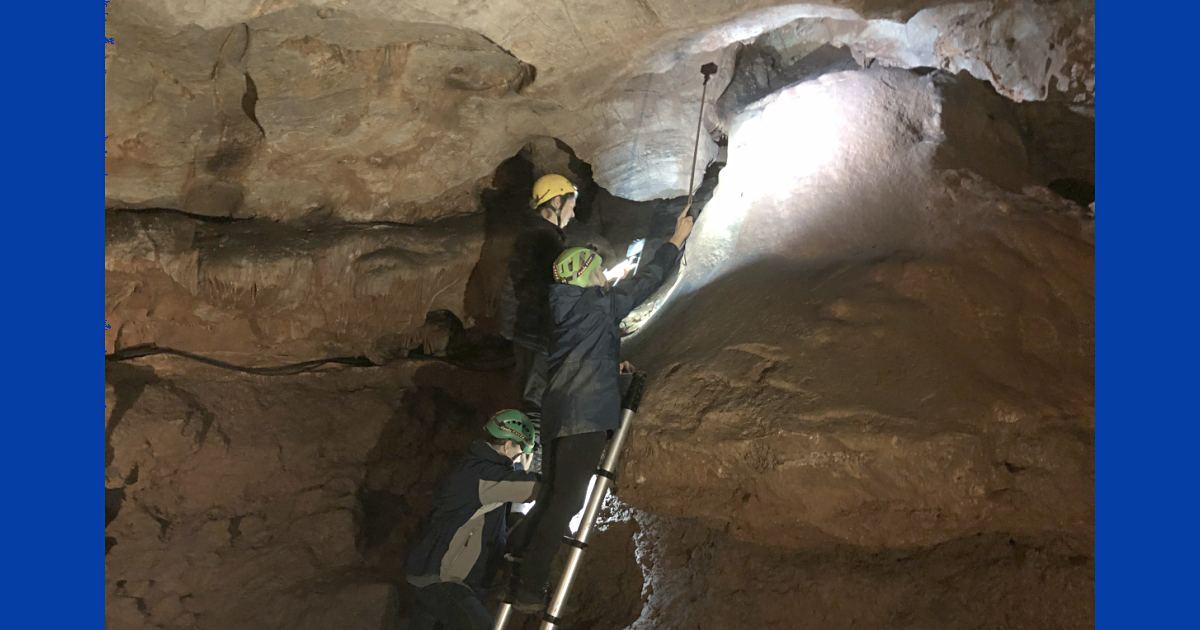
Linda Wilson, Jan Walker and Rebecca Ireland recording the 'Petre Boss' in Bears Den, Kent's Cavern
Photo: Linda Wilson
The Raking Light team are working with the management at Kents Cavern, Torquay on a
project to record and research the myriad inscriptions and other markings left behind by
visitors to the cave. Early researchers such as Father John McEnery and William Pengelly
noted many of the inscriptions they found but noted that some were already being lost to a
covering of calcite. As part of the cave's conservation plan, the aim is to record and
photograph the current state of the inscriptions as well as other marks throughout the cave
made with chalk, candle smoke and pencil. The project is amassing a wealth of detail about
early visitors to the cave and, working with genealogical and historic records, the team hopes
to shine a light on the identity of some of these people.
#8 — Mon 13 Oct 2025 ▲ ▼
Cave Exploration, Guano, and Prehistory in Malaya and Borneo, 1870s-1960s
With: Katherine Enright, PhD student, Faculty of History and Museum of Zoology, Trinity College, Cambridge
Time: Mon 13-Oct 2025, 19:30 to 21:00 BST.
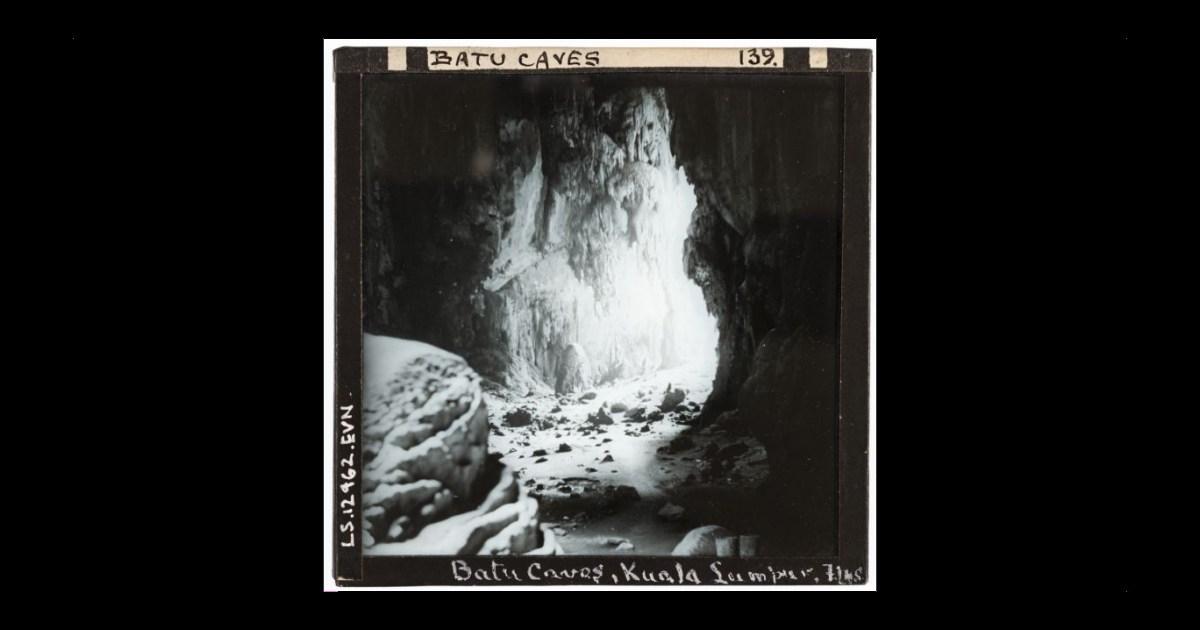
Photo: Museum of Archaeology and Anthropology, University of Cambridge, LS.12962.EVN
In the late 19th century, inspired by rich paleontological and archaeological finds in temperate
caves, scientists began to systematically explore the caves of peninsular Malaya and Borneo.
Early speleologists were stymied by what they perceived as a general absence of artefacts, remains,
and specialised animal species. Their conclusions led to a colonial perception of Malaya as a land
where there is nothing old but nature. By 1900, scientific attention also turned to bat guano,
on the cave floors, and how it might be commercially exploited as a phosphate fertiliser source
for the growing plantation economy. In the writings of archaeologists, an antagonism developed towards
these guano diggers whose excavations disturbed the stratigraphy of potential field sites. This talk
will trace the work of subsequent cave archaeologists through the first half of the 20th century,
centring on Batu Caves in Selangor, Gunung Pondok in Perak, and Niah Caves in Sarawak. Attempts to
establish the prehistory of Malaya and Borneo coincided and interacted, in the 1950s and 60s, with the
writing of a history of the new nation of Malaysia. I will conclude by considering the legacies of colonial
speleology on research in the last several decades.
#9 — Mon 03 Nov 2025 ▲
Scientific Investigations in Greenland's Caves: Unlocking High Arctic Climate Histories
With: Gina Moseley, Assistant Professor of Palaeoclimatology, University of Innsbruck
Time: Mon 03-Nov 2025, 19:30 to 21:00 GMT.
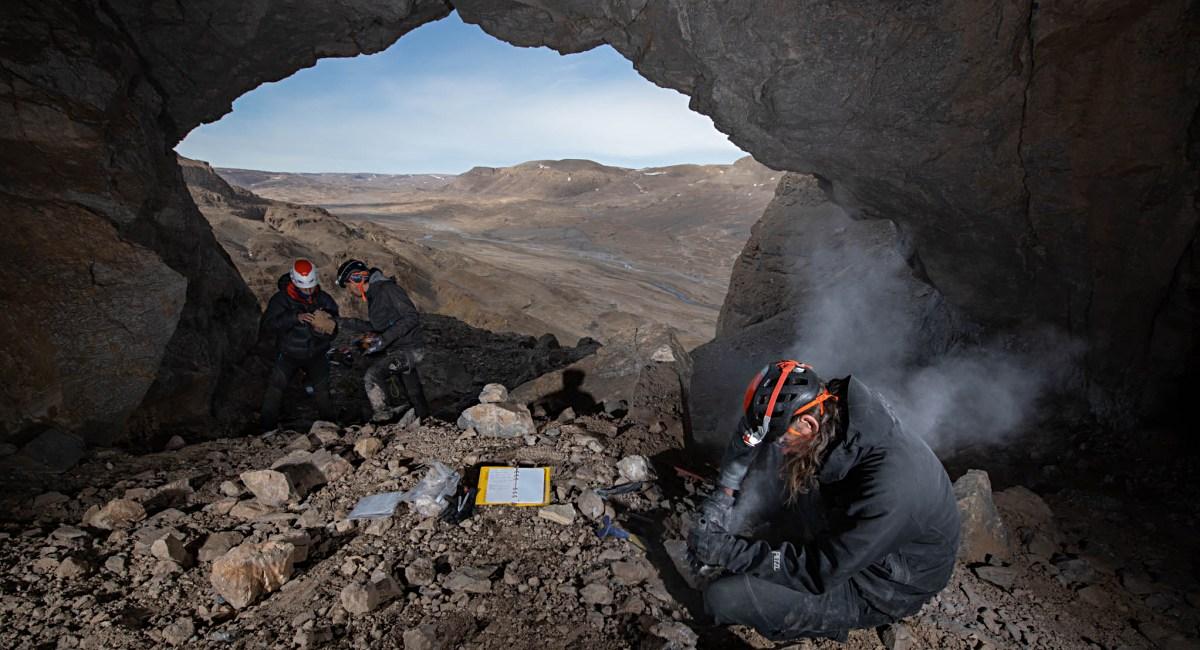
Greenland Caves Project
Photo: Robbie Shone
Greenland's High Arctic caves represent a unique and largely untapped archive of past environmental change.
Since 2015, the Greenland Caves Project has carried out multidisciplinary scientific investigations across
several limestone cave systems between 80–82°N in North Greenland, including sites in Kronprins
Christian Land and Wulff Land.
These caves host rare but exceptionally well-preserved flowstones that formed during past warm periods when
the regional climate was wetter and the ground was warm enough that it did not contain permafrost, thereby
allowing water to percolate through the ground and into the caves.
Through a combination of U-Pb dating, stable isotope geochemistry (δ18O, δ13C), trace element
analysis, and petrography, The Greenland Caves Project has reconstructed aspects of Greenland's paleohydrology,
permafrost dynamics, and atmospheric circulation during the Miocene, between 15 to 5 million years ago.
The cave records complement and extend marine and ice-core data, offering an independent terrestrial perspective
on high-latitude climate variability. Ongoing work is focused on refining chronologies, improving paleoclimate
proxies in Arctic cave settings, and integrating these records into broader paleoclimate frameworks. These findings
highlight the scientific importance of Greenland's caves as high-latitude climate archives and underscore their
sensitivity to past and future environmental change.










